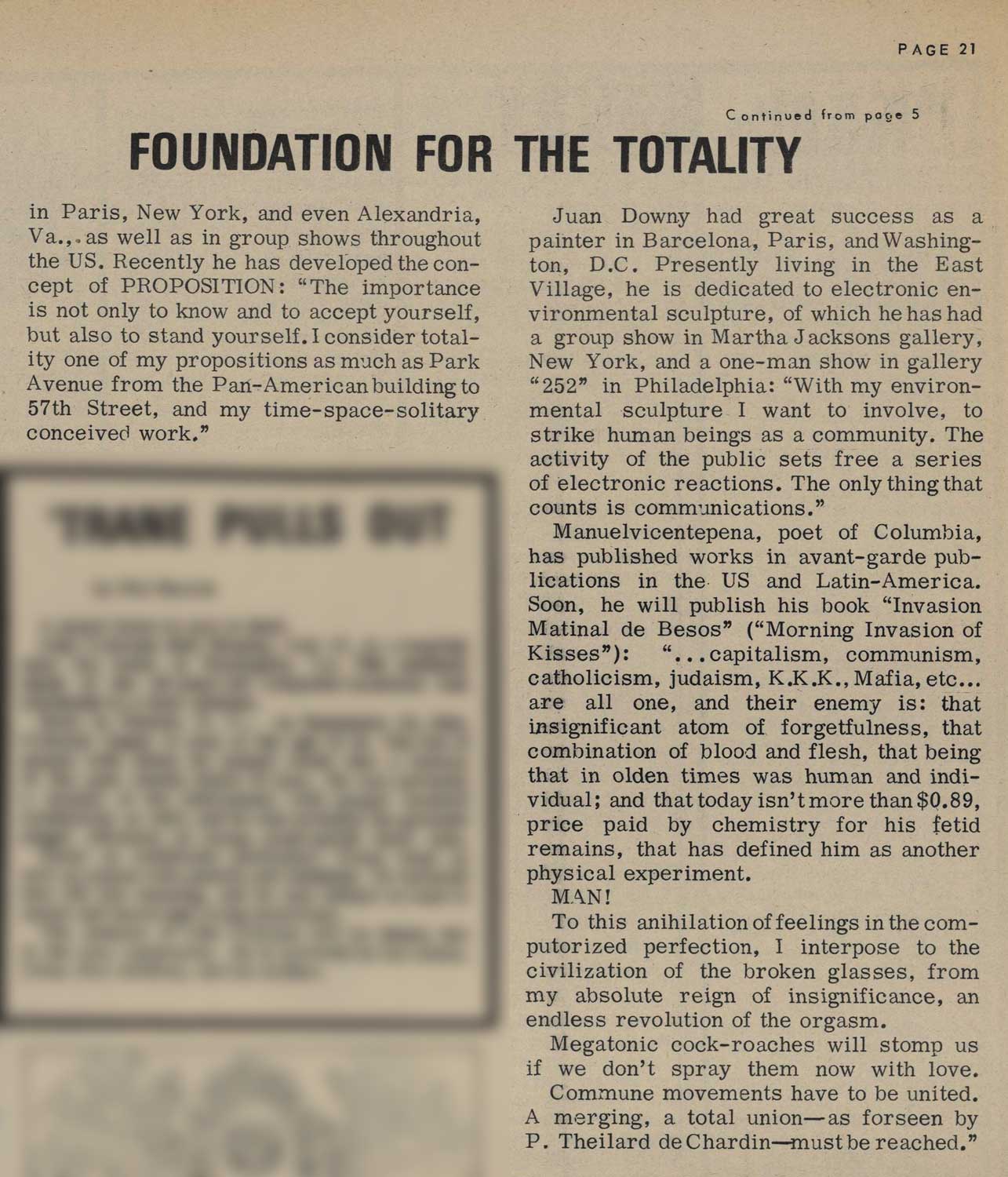FOUNDATION FOR THE TOTALITY
In 1966 I had just created the Foundation for the Totality with a group of great artists and Waldo Balart who was part of the group, invited us to spend a long weekend at his house of East Hampton to participate in a movie by Andy Warhol that would be called "****(Four Stars)" and which would last 24 hours. We arrived and I improvised with Waldo, Manuel Vicente Peña (aka Manuel Quinto) and the "Banana Cuban Boys" a Happening called "The Paella-Bycicle-Totality-Crucifixion" which was entirely filmed and is part of this great film.
Members of The Foundation for the Totality
Joseph Aliaga • Carlos Anduze • Waldo Balart • Alfonso Barrios • Jaime Barrios • Gregory Battcock • Carmen Beuchat • Walter Bowart • Jaime Caro • Joe Dallesandro • Candy Darling • Divine • Juan Downey • Marisol Escobar • Arturo Esguerra • Chuck Federman • Ana María Fuenzalida • Allen Ginsberg • Moira Hobson • Nam June Paik • Vicky Larrain • Timothy Leary • Casey Lee • Noel Levert • Juan Liscano • Iván Loscher • Roberto Loscher • Gerard Malanga • Taylor Mead • Allen Midgette • Marcelo Montealegre • Mario Montes • Isabel Morrison • Paul Morrissey • Billy Name • Julio Neri • Nico • Rudolf Nureyev • Manuel Quinto • Pierre Restany • Edie Sedgwick • Diego Rísquez • José Rodríguez Soltero • Marcela Rossiter • Carla Rotolo • Simone Swan • Diego Texera • Angela Tirelli • Ultraviolet • Zezzar A. Vallejo • Aldo Vigliarolo • Viva • Andy Warhol
The Foundation for the Totality is working in all media "to invade with LOVE and LIBERTY, the puritanical fields of the world and to make Mao copulate with the Statue of Liberty so they may engender an hippie son – Rolando Peña
Foundation for the Totality – Timeline Poster
The Other by East Village (Vol. 2 No. 17), 1967
Underground Newspaper Ginsberg
New York, United States
Evohowl by East Village Other (Vol. 2 No. 18), 1967
Underground Newspaper Ginsberg
New York, United States
Though not technically illegal, underground papers were often genuinely subversive, and many of those who produced and sold them-on street-corners, at poetry readings, gallery openings, and coffeehouses-became targets of harassment from local and federal authorities. With writers who actively participated in the events they described, underground newspapers captured the zeitgeist of the '60s, speaking directly to their readers, and reflecting and magnifying the spirit of cultural and political protest.



